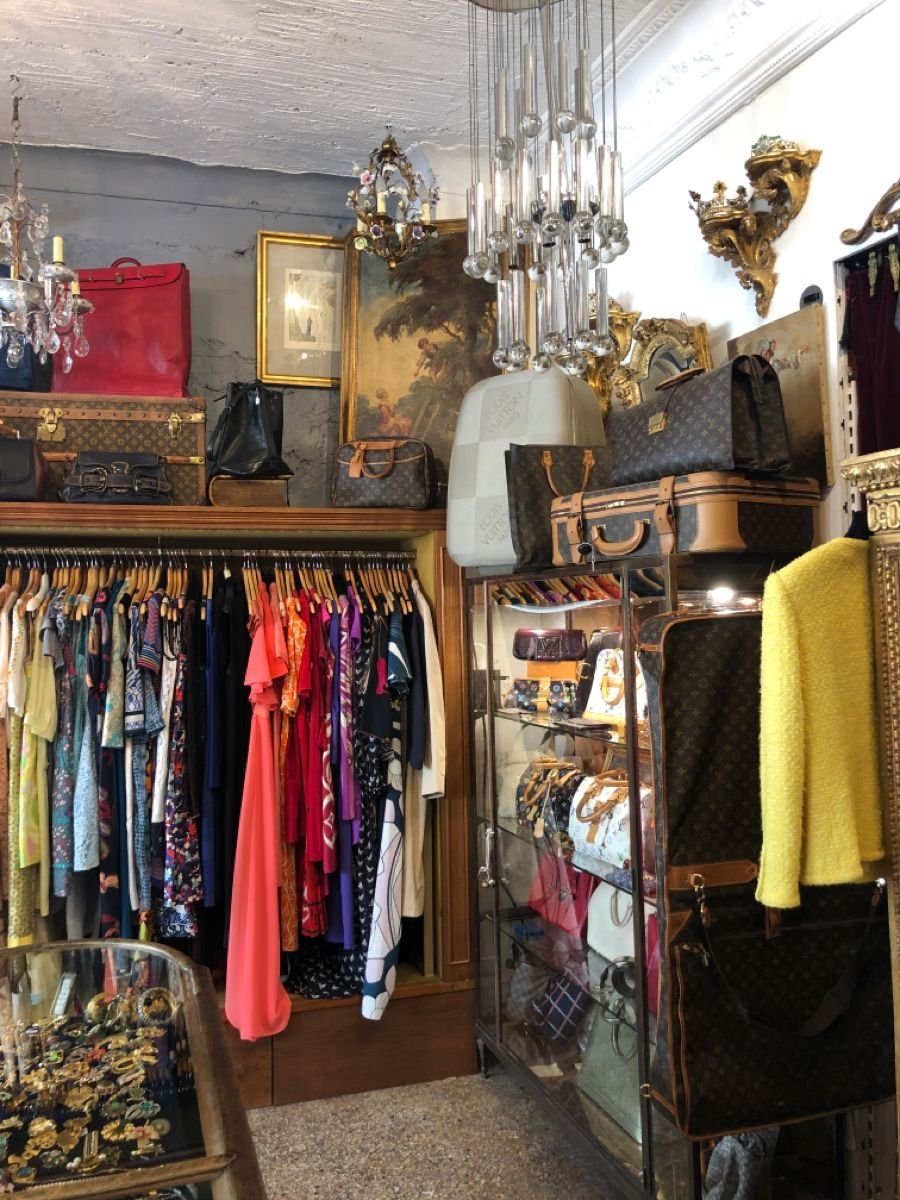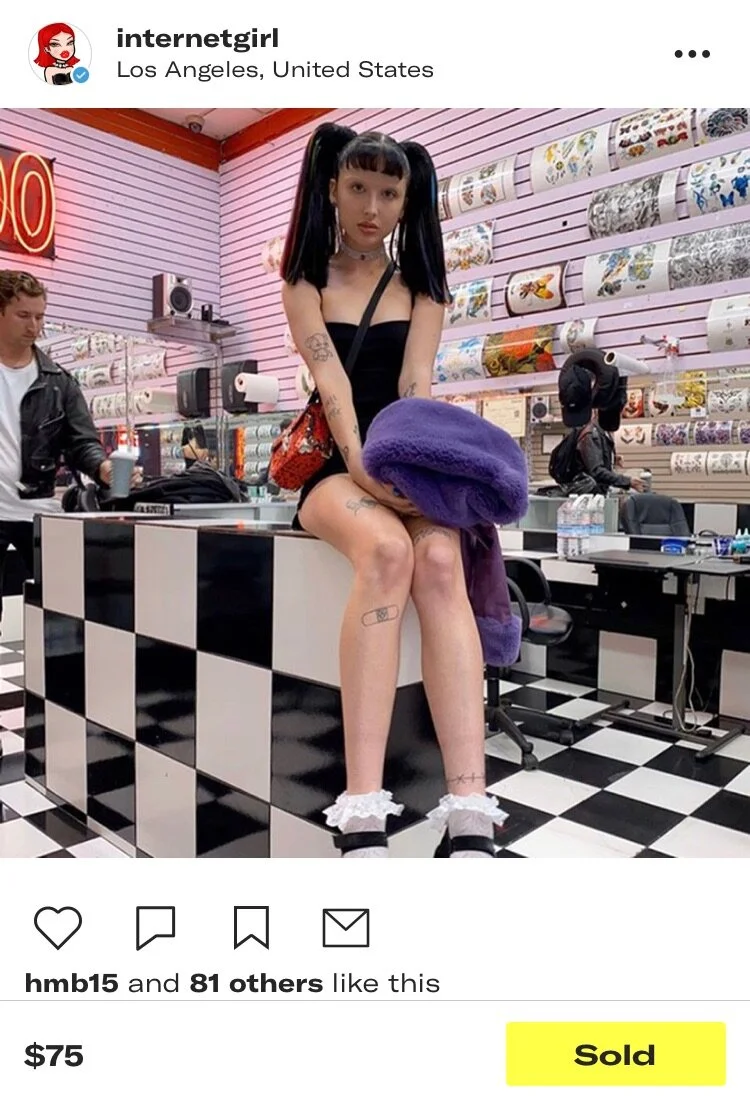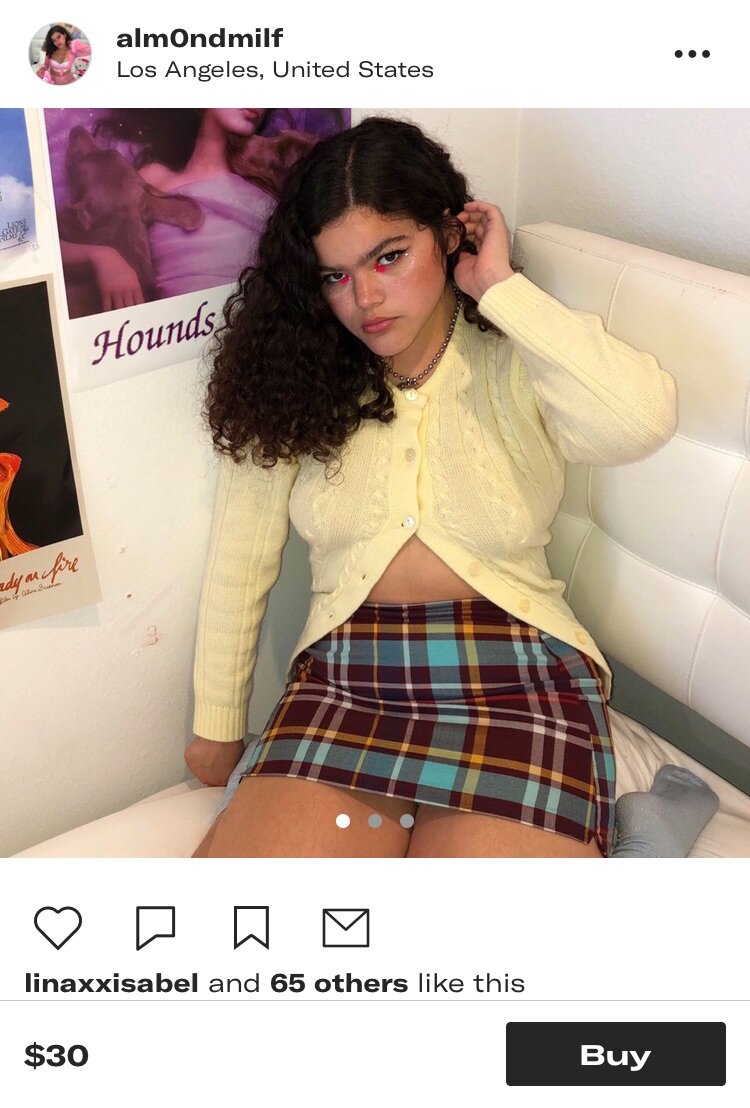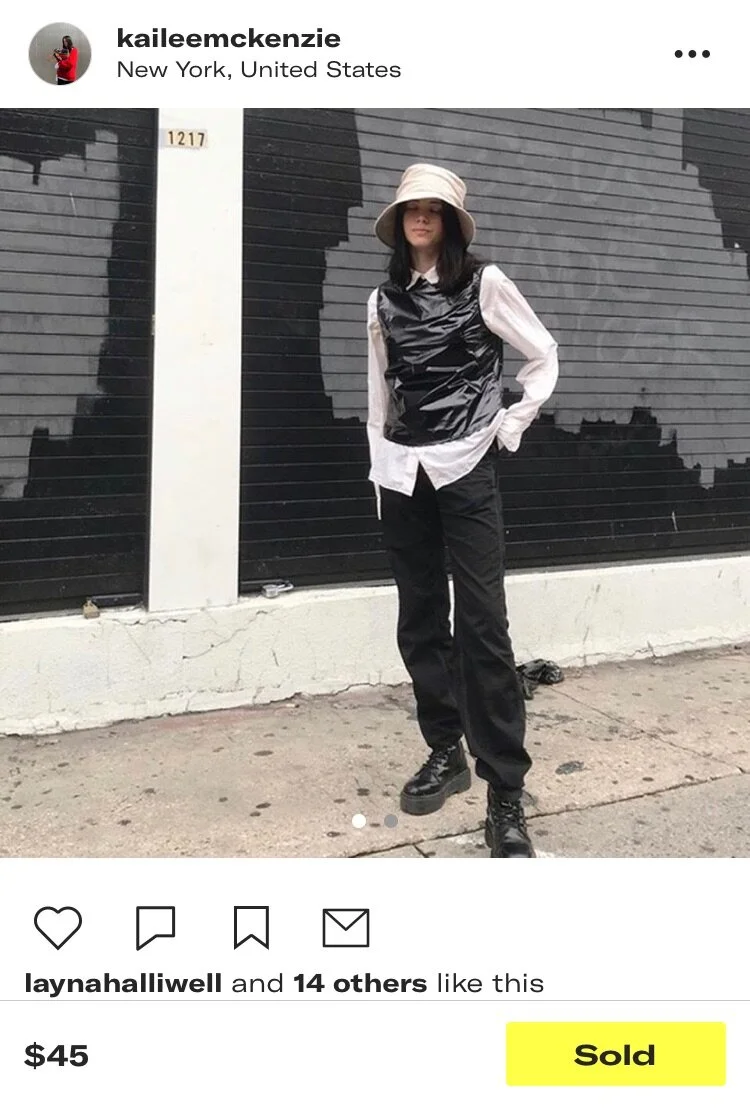Swiping through the racks of Goodwill is something I’ll likely be up to on any given weekend when I’m back at home. Glancing at my closet, the majority of my clothing is second hand. Thrifting has allowed me to cultivate my personal style without relying on what is trendy. It’s far less expensive than buying new clothing. It isn’t a guarantee that I’ll find something that I like every time I shop, giving thrifting an element of surprise and chance.
Considering my enjoyment of going to the thrift store, it was no surprise to me when this passion spilled over to the world of virtual thrifting. Upon starting college (which sadly meant less trips to Goodwill), I started using Depop, an online second hand retailer. The app’s super-specific algorithm always manages to find the perfect item. It’s often more expensive than a traditional second hand shop, but finding deals isn’t difficult.
Changing my clothing consumption habits by purchasing mostly second hand rather than clothing produced by fast fashion brands felt like something easy I could do to help out the planet. When buying clothing from online retailers such as Shein, Urban Outfitters, or H&M, the clothing purchased is likely made thousands of miles away. The working conditions in textile factories are often hazardous and exploitative, and the factories themselves release toxic dyes into the surrounding environment. The localities where cheap clothing is produced bear a heavy environmental burden as a result of the fast fashion industry. These factors alone don’t even account for the carbon dioxide expelled in order to ship clothing across continents, or the 3.8 billion pounds of unwanted clothing sent to the landfill by Americans each year. The entire premise of fast fashion is based upon the principle of fast production and fast consumption. In other words, the shirt you bought from YesStyle probably isn’t going to be worn more than a few times.
Certain alternatives to unsustainable fashion can be extremely expensive. The price tags from ethically conscious clothing brands such as Reformation aren’t realistic for most shoppers, making the thrift store an appealing eco-friendly choice. There isn’t any doubt that young people feel the pressure of climate anxiety and want to ease these worries through more sustainable consumption habits. When examining the ethical and environmental costs of fast fashion, it becomes obvious that buying second hand is a far better choice.
Thus, I was relatively shocked to see so much animosity on online forums towards thrifting after its popularity soared in recent years, and felt the need to defend my favorite weekend activity. Yet, I soon realized that most of the criticisms were directed at thrift resellers. That is, people who purchase clothing at the thrift only to mark up the price and profit off of online sales. My favorite Depop shops were certainly guilty of this. The constant stream of items they listed were bought for far less.
I was met with an ethical dilemma. Were the supposedly positive choices I was making hiding something more insidious?
Initially, I didn’t have the sense that there was anything unethical about thrift reselling. After all, purchasing clothing from Depop promotes the circulation of clothing in the market, keeping the same item of clothing out of the landfills for longer. Unwanted items from your closet can become someone else’s favorite piece with the help of second hand shopping apps. The high volume of textiles which are donated to thrift stores is shipped overseas to Eastern European countries or nations in the Global South, which has caused these places to develop textile waste issues of their own. More specifically, about 80% of donations received by thrift stores are sent out of the country. Selling secondhand online can ensure that some items end up being worn instead of becoming textile waste. It also allows those who live far away from thrift stores to access secondhand clothing. Most importantly, it is an alternative to the environmental catastrophe of fast fashion. It combines the ease of shopping online with the unique items that thrifting offers.
So, what are the criticisms against thrift resellers?
Like many others, I’ve noticed an increase in pricing at favorite thrifting spots in the past few years. My friends and I mourn the loss of Goodwill’s monthly 99 cent day, or the fact that every pair of shoes there now costs at least ten dollars. Some shoppers attribute the inflation of thrift store pricing to clothing resellers. Thrift store owners may become more aware of the price that people are willing to pay for second hand items and begin judging the quality of particular items more closely, leading to price increases. This is a valid concern, as thrift stores may be essential to some low-income individuals. There is an inherent privilege in having the choice to go thrift shopping, rather than doing it out of necessity. Yet, it’s difficult to blame individual resellers when it is the corporations themselves–many of them supposed nonprofits– who are raising the prices. As with many things, the rise of prices at the thrift is indicative of a greater issue.
It is also clear that thrift resellers aren’t contributing to any sort of clothing scarcity, which is another common criticism against the practice. One of my most frequented thrifting locations in Chicago, Village Discount, is so tightly packed with clothing that it is difficult to look at individual pieces. The store receives so many donations that it boasts how shoppers experience an entirely new store each time one may visit.
Along these lines, thrift resellers often curate their online shops towards a super-specific niche. Resellers aren’t “taking away” clothes from those who need them most; the needs of shoppers vary so greatly that this isn’t really an issue.
While your average thrift reseller may not be doing anything ethically questionable, that doesn’t mean buying second hand always comes guilt-free.The fact that these methods of shopping can be so inexpensive certainly has led me to accumulate clothing I didn’t truly need. It’s easy to be tempted into buying unnecessary items simply because they’re cheap. As with any other type of shopping, it’s important to be conscious about what you buy. I’ve started to develop certain criteria for items so that I don’t walk away from Goodwill with a bag full of items that I might donate again in the future. It’s important to select items which will stay in your closet longest. Donating clothing seems like a simple way to keep things out of the landfill, but since so many of donated items end up being sent elsewhere, it’s essential that we are more conscious about how much stuff we accumulate.
With this in mind, there are other methods of finding clothes which promote sustainability. Last May, a friend of mine held a clothing swap for her birthday. Each of us rifled through our closets and collected our unwanted clothes, and then examined everyone else’s items to see what we wanted. I ended up with a lot of pieces that I wear quite frequently, and I get a lot of enjoyment out of seeing my friends use clothing I had no purpose for and likely would have donated instead. Swapping and borrowing clothes is an environmentally friendly and easy way to refresh your closet.
The most crucial lesson to be had when examining the ethics of buying second-hand? Developing cautious consumption habits is a goal we should all strive for. Shopping second hand is impactful only when it is paired with thoughtful intentions to ensure your clothing doesn’t become someone else’s unwanted waste.








